-
 Gazcue
Gazcue The city of Santo Domingo is one of Dominican Republic’s most diverse and colorful urban destinations. The upper-middle class sector known as Gazcue is no exception. One of the oldest neighborhoods in the city, travelers will find stunning Spanish-colonial architecture, tiled walkways, loca
Gazcue
Gazcue The city of Santo Domingo is one of Dominican Republic’s most diverse and colorful urban destinations. The upper-middle class sector known as Gazcue is no exception. One of the oldest neighborhoods in the city, travelers will find stunning Spanish-colonial architecture, tiled walkways, loca
-
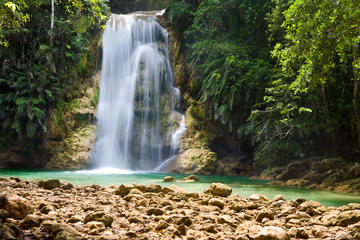 El Limón Waterfall
El Limón Waterfall Whether it’s hiking up the rugged terrain of Dominican Republic’s tallest falls on foot or riding horseback through the steep mountain passes, a trip to the El Limón waterfall is a quintessential Dominican Republic experience. Crested mountaintops stretch some 2,100 feet into th
El Limón Waterfall
El Limón Waterfall Whether it’s hiking up the rugged terrain of Dominican Republic’s tallest falls on foot or riding horseback through the steep mountain passes, a trip to the El Limón waterfall is a quintessential Dominican Republic experience. Crested mountaintops stretch some 2,100 feet into th
-
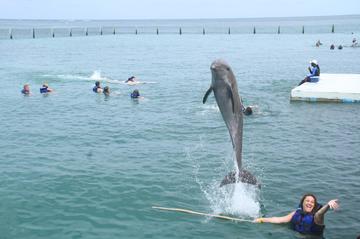 Dolphin Explorer
Dolphin Explorer Offering the unique opportunity to swim with dolphins in a semi-natural environment, Punta Cana’s Dolphin Explorer has a floating island and wildlife park right on the ocean. The highlight for most visitors is swimming with the dolphins and the playful creatures are trained to do
Dolphin Explorer
Dolphin Explorer Offering the unique opportunity to swim with dolphins in a semi-natural environment, Punta Cana’s Dolphin Explorer has a floating island and wildlife park right on the ocean. The highlight for most visitors is swimming with the dolphins and the playful creatures are trained to do
-
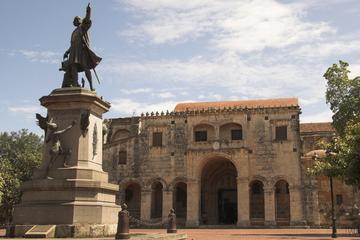 Columbus Park (Parque Colon)
Columbus Park (Parque Colon) In a diverse city with streets that vary from colonial cobblestone to well-worn dirt paths, the bustling square of Columbus Park proves iconic, with an energy that unifies old world Santo Domingo with contemporary Dominican Republic.Once known as Plaza Mayor, the squar
Columbus Park (Parque Colon)
Columbus Park (Parque Colon) In a diverse city with streets that vary from colonial cobblestone to well-worn dirt paths, the bustling square of Columbus Park proves iconic, with an energy that unifies old world Santo Domingo with contemporary Dominican Republic.Once known as Plaza Mayor, the squar
-
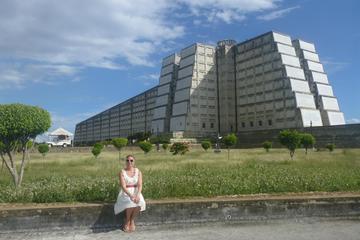 Columbus Lighthouse (Faro a Colón)
Columbus Lighthouse (Faro a Colón) Like much of this capital city, Faro a Colon, a bold and imposing cross-shaped structure, serves as a tribute to one of the world’s most famous explorers. Built in a style that’s more urban office building than coastal treasure, this mausoleum and museum does hav
Columbus Lighthouse (Faro a Colón)
Columbus Lighthouse (Faro a Colón) Like much of this capital city, Faro a Colon, a bold and imposing cross-shaped structure, serves as a tribute to one of the world’s most famous explorers. Built in a style that’s more urban office building than coastal treasure, this mausoleum and museum does hav
-
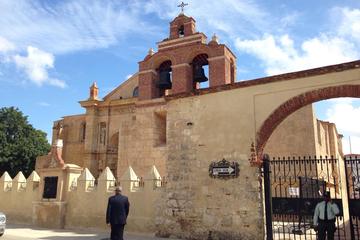 Cathedral of Santa Maria la Menor (Catedral Primada de América)
Cathedral of Santa Maria la Menor (Catedral Primada de América) Recognized as one of the oldest churches in the Americas, Cathedral of Santa Maria la Menor is Santo Domingo’s most famous religious structure. Tucked into the old-world streets of the city’s Colonial Zone, Santa Maria was built in th
Cathedral of Santa Maria la Menor (Catedral Primada de América)
Cathedral of Santa Maria la Menor (Catedral Primada de América) Recognized as one of the oldest churches in the Americas, Cathedral of Santa Maria la Menor is Santo Domingo’s most famous religious structure. Tucked into the old-world streets of the city’s Colonial Zone, Santa Maria was built in th
-
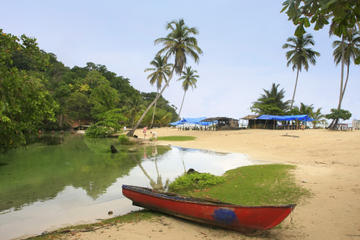 Cano Frio River
Cano Frio River Somewhere near the edge of Playa Rincon—which is easily one of the best beaches in Dominican Republic—lies the Cano Frio River. This cooling stream feeds into a quiet pool that’s perfect for relaxing in along the sheltered shores of Samana. Travelers love to escape the heat by taki
Cano Frio River
Cano Frio River Somewhere near the edge of Playa Rincon—which is easily one of the best beaches in Dominican Republic—lies the Cano Frio River. This cooling stream feeds into a quiet pool that’s perfect for relaxing in along the sheltered shores of Samana. Travelers love to escape the heat by taki
-
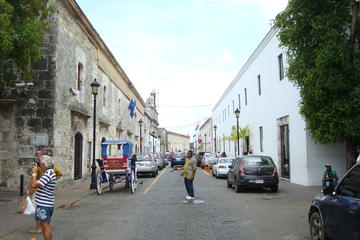 Calle de las Damas
Calle de las Damas Calle de las Damas is one of the Colonial Zone’s most picturesque destinations. The cobblestone street—said to be the first ever in the New World—is lined with classic Spanish-style houses and beautiful European churches that are a nod to the city’s ancient past. Travelers can v
Calle de las Damas
Calle de las Damas Calle de las Damas is one of the Colonial Zone’s most picturesque destinations. The cobblestone street—said to be the first ever in the New World—is lined with classic Spanish-style houses and beautiful European churches that are a nod to the city’s ancient past. Travelers can v
-
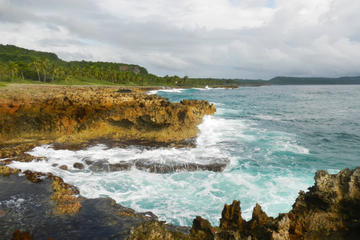 Cabo Cabrón National Park
Cabo Cabrón National Park Cabo Cabron National Park offers visitors a taste of old Dominican Republic—a place and time before resorts, tourists and development touched down on this tropical island. With uninhabited coastlines, rocky cliffs and rugged trails, this protected forest is one of the mos
Cabo Cabrón National Park
Cabo Cabrón National Park Cabo Cabron National Park offers visitors a taste of old Dominican Republic—a place and time before resorts, tourists and development touched down on this tropical island. With uninhabited coastlines, rocky cliffs and rugged trails, this protected forest is one of the mos
-
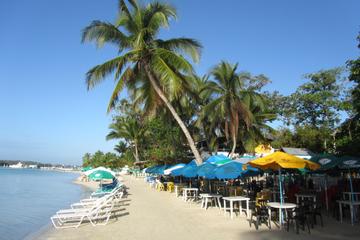 Boca Chica
Boca Chica With its powder-soft white sands and warm waters, Boca Chica is the ultimate beach resort and at less than half an hour from Santo Domingo, it makes a popular escape from the capital. The main attraction of Boca Chica is its calm, shallow swimming waters, but nearby Catalina Lake is als
Boca Chica
Boca Chica With its powder-soft white sands and warm waters, Boca Chica is the ultimate beach resort and at less than half an hour from Santo Domingo, it makes a popular escape from the capital. The main attraction of Boca Chica is its calm, shallow swimming waters, but nearby Catalina Lake is als
-
 Amber Cove
Amber Cove The newest cruise port in the Dominica Republic is Amber Cove, near the northern coast town of Puerta Plata. Built by the Carnival cruise line, Amber Cove opened in November 2015, and it’s a convenient jumping off spot for all kinds of activities, from snorkeling trips to ATV adventures
Amber Cove
Amber Cove The newest cruise port in the Dominica Republic is Amber Cove, near the northern coast town of Puerta Plata. Built by the Carnival cruise line, Amber Cove opened in November 2015, and it’s a convenient jumping off spot for all kinds of activities, from snorkeling trips to ATV adventures
-
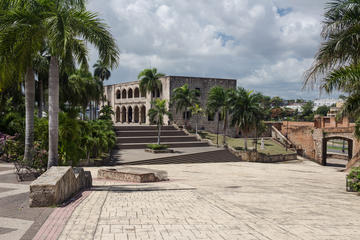 Alcázar de Colón (Columbus Palace)
Alcázar de Colón (Columbus Palace) This UNESCO World Heritage site located in Santo Domingo’s Colonial Zone, is the oldest Viceroy residency in all of the Americas. Once the home of the famous Columbus family, the symmetrical structure was built by the famous explorers son is 1515.This historic si
Alcázar de Colón (Columbus Palace)
Alcázar de Colón (Columbus Palace) This UNESCO World Heritage site located in Santo Domingo’s Colonial Zone, is the oldest Viceroy residency in all of the Americas. Once the home of the famous Columbus family, the symmetrical structure was built by the famous explorers son is 1515.This historic si
-
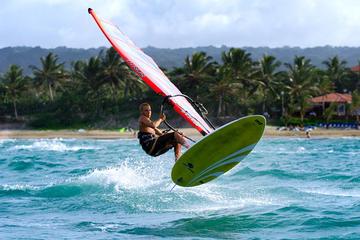 Cabarete
Cabarete From its beginnings as a rural hamlet blessed with a great beach, Cabarete has matured into an adventure-sports mecca and an international party town. Thanks to perfect wind conditions for kiteboarding and windsurfing, Cabarete has made a name for itself on the international windsurfing c
Cabarete
Cabarete From its beginnings as a rural hamlet blessed with a great beach, Cabarete has matured into an adventure-sports mecca and an international party town. Thanks to perfect wind conditions for kiteboarding and windsurfing, Cabarete has made a name for itself on the international windsurfing c
-
 Pomier Caves
Pomier Caves When Christopher Columbus “discovered” the Americas by bumping into Hispaniola, indigenous Taino and Carib tribes had lived here for thousands of years. Unfortunately, much of their history was tragically destroyed by centuries of colonial rule, but here in the hidden Pomier Caves, th
Pomier Caves
Pomier Caves When Christopher Columbus “discovered” the Americas by bumping into Hispaniola, indigenous Taino and Carib tribes had lived here for thousands of years. Unfortunately, much of their history was tragically destroyed by centuries of colonial rule, but here in the hidden Pomier Caves, th
-
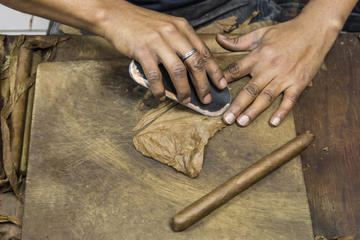 Moca
Moca Set in the fertile agricultural plains to the east of Santiago, Moca is a truly authentic town that’s known for its political heritage. The name of the town is a holdover from indigenous native tribes, and some of the nation’s most revolutionary figures have either lived, or passed through th
Moca
Moca Set in the fertile agricultural plains to the east of Santiago, Moca is a truly authentic town that’s known for its political heritage. The name of the town is a holdover from indigenous native tribes, and some of the nation’s most revolutionary figures have either lived, or passed through th
-
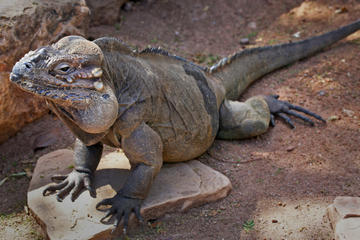 Isla Cabritos National Park
Isla Cabritos National Park Imagine a dry, deserted island that’s covered in endangered iguanas. Now, imagine that island’s inside a lake that’s over 100 feet below sea level, and has cactus, crocodiles, thousands of birds, and scorching, 120° temperatures? No—this isn’t a place from a fantasy nov
Isla Cabritos National Park
Isla Cabritos National Park Imagine a dry, deserted island that’s covered in endangered iguanas. Now, imagine that island’s inside a lake that’s over 100 feet below sea level, and has cactus, crocodiles, thousands of birds, and scorching, 120° temperatures? No—this isn’t a place from a fantasy nov
-
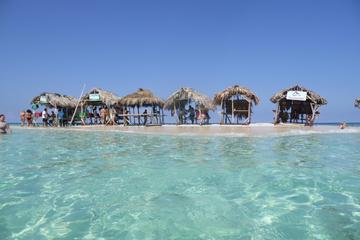 Cayo Arena
Cayo Arena Cayo Arena, off the Dominican Republic’s northern coast, is a faint whisper of a Caribbean island that barely even exists. This sandy dollop rising up from the reef measures 2,100 square feet—which makes it less than a tenth of an acre of fine, sparkling white sand. After racing across
Cayo Arena
Cayo Arena Cayo Arena, off the Dominican Republic’s northern coast, is a faint whisper of a Caribbean island that barely even exists. This sandy dollop rising up from the reef measures 2,100 square feet—which makes it less than a tenth of an acre of fine, sparkling white sand. After racing across
-
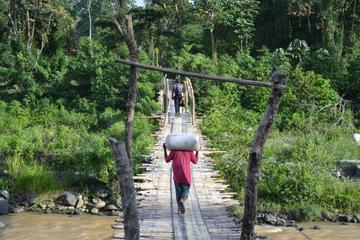 Bonao
Bonao Bonao isn’t a place that tourists go, and that’s exactly the reason to visit. Set high in the hills an hour north of historic Santo Domingo, Bonao is a city awash in authenticity—where traditional Dominican arts and culture offer a look at the island’s soul. February’s Carnaval is the most c
Bonao
Bonao Bonao isn’t a place that tourists go, and that’s exactly the reason to visit. Set high in the hills an hour north of historic Santo Domingo, Bonao is a city awash in authenticity—where traditional Dominican arts and culture offer a look at the island’s soul. February’s Carnaval is the most c
-
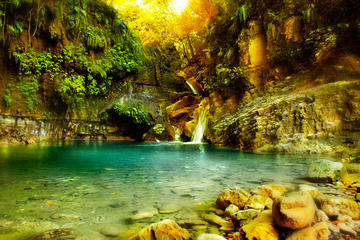 Damajagua Falls
Damajagua Falls Hidden in a lush jungle, the Damajagua Falls are a series of 27 cascading waterfalls only discovered as recently as the early 1990s. You can climb, jump off and slide down this natural, watery assault course, which can become treacherous after heavy rain. The best way to see
Damajagua Falls
Damajagua Falls Hidden in a lush jungle, the Damajagua Falls are a series of 27 cascading waterfalls only discovered as recently as the early 1990s. You can climb, jump off and slide down this natural, watery assault course, which can become treacherous after heavy rain. The best way to see
-
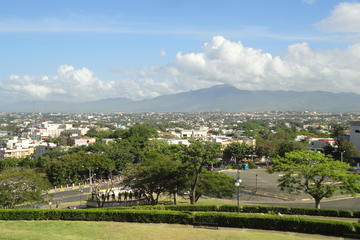 Santiago
Santiago Santiago, or Santiago de los Caballeros, is located in the Cibao Valley, and with nearly 1 million residents, it’s the second-largest city in the Dominican Republic. Santiago’s origins date back to 1495, when Christopher Columbus built a fort on the banks of the Yaque del Norte River. San
Santiago
Santiago Santiago, or Santiago de los Caballeros, is located in the Cibao Valley, and with nearly 1 million residents, it’s the second-largest city in the Dominican Republic. Santiago’s origins date back to 1495, when Christopher Columbus built a fort on the banks of the Yaque del Norte River. San
Total
215 -travel
FirstPage PreviousPage NextPage LastPage CurrentPage:
2/11 20-travel/Page Goto:
 Gazcue
Gazcue The city of Santo Domingo is one of Dominican Republic’s most diverse and colorful urban destinations. The upper-middle class sector known as Gazcue is no exception. One of the oldest neighborhoods in the city, travelers will find stunning Spanish-colonial architecture, tiled walkways, loca
Gazcue
Gazcue The city of Santo Domingo is one of Dominican Republic’s most diverse and colorful urban destinations. The upper-middle class sector known as Gazcue is no exception. One of the oldest neighborhoods in the city, travelers will find stunning Spanish-colonial architecture, tiled walkways, loca
 El Limón Waterfall
El Limón Waterfall Whether it’s hiking up the rugged terrain of Dominican Republic’s tallest falls on foot or riding horseback through the steep mountain passes, a trip to the El Limón waterfall is a quintessential Dominican Republic experience. Crested mountaintops stretch some 2,100 feet into th
El Limón Waterfall
El Limón Waterfall Whether it’s hiking up the rugged terrain of Dominican Republic’s tallest falls on foot or riding horseback through the steep mountain passes, a trip to the El Limón waterfall is a quintessential Dominican Republic experience. Crested mountaintops stretch some 2,100 feet into th
 Dolphin Explorer
Dolphin Explorer Offering the unique opportunity to swim with dolphins in a semi-natural environment, Punta Cana’s Dolphin Explorer has a floating island and wildlife park right on the ocean. The highlight for most visitors is swimming with the dolphins and the playful creatures are trained to do
Dolphin Explorer
Dolphin Explorer Offering the unique opportunity to swim with dolphins in a semi-natural environment, Punta Cana’s Dolphin Explorer has a floating island and wildlife park right on the ocean. The highlight for most visitors is swimming with the dolphins and the playful creatures are trained to do
 Columbus Park (Parque Colon)
Columbus Park (Parque Colon) In a diverse city with streets that vary from colonial cobblestone to well-worn dirt paths, the bustling square of Columbus Park proves iconic, with an energy that unifies old world Santo Domingo with contemporary Dominican Republic.Once known as Plaza Mayor, the squar
Columbus Park (Parque Colon)
Columbus Park (Parque Colon) In a diverse city with streets that vary from colonial cobblestone to well-worn dirt paths, the bustling square of Columbus Park proves iconic, with an energy that unifies old world Santo Domingo with contemporary Dominican Republic.Once known as Plaza Mayor, the squar
 Columbus Lighthouse (Faro a Colón)
Columbus Lighthouse (Faro a Colón) Like much of this capital city, Faro a Colon, a bold and imposing cross-shaped structure, serves as a tribute to one of the world’s most famous explorers. Built in a style that’s more urban office building than coastal treasure, this mausoleum and museum does hav
Columbus Lighthouse (Faro a Colón)
Columbus Lighthouse (Faro a Colón) Like much of this capital city, Faro a Colon, a bold and imposing cross-shaped structure, serves as a tribute to one of the world’s most famous explorers. Built in a style that’s more urban office building than coastal treasure, this mausoleum and museum does hav
 Cathedral of Santa Maria la Menor (Catedral Primada de América)
Cathedral of Santa Maria la Menor (Catedral Primada de América) Recognized as one of the oldest churches in the Americas, Cathedral of Santa Maria la Menor is Santo Domingo’s most famous religious structure. Tucked into the old-world streets of the city’s Colonial Zone, Santa Maria was built in th
Cathedral of Santa Maria la Menor (Catedral Primada de América)
Cathedral of Santa Maria la Menor (Catedral Primada de América) Recognized as one of the oldest churches in the Americas, Cathedral of Santa Maria la Menor is Santo Domingo’s most famous religious structure. Tucked into the old-world streets of the city’s Colonial Zone, Santa Maria was built in th
 Cano Frio River
Cano Frio River Somewhere near the edge of Playa Rincon—which is easily one of the best beaches in Dominican Republic—lies the Cano Frio River. This cooling stream feeds into a quiet pool that’s perfect for relaxing in along the sheltered shores of Samana. Travelers love to escape the heat by taki
Cano Frio River
Cano Frio River Somewhere near the edge of Playa Rincon—which is easily one of the best beaches in Dominican Republic—lies the Cano Frio River. This cooling stream feeds into a quiet pool that’s perfect for relaxing in along the sheltered shores of Samana. Travelers love to escape the heat by taki
 Calle de las Damas
Calle de las Damas Calle de las Damas is one of the Colonial Zone’s most picturesque destinations. The cobblestone street—said to be the first ever in the New World—is lined with classic Spanish-style houses and beautiful European churches that are a nod to the city’s ancient past. Travelers can v
Calle de las Damas
Calle de las Damas Calle de las Damas is one of the Colonial Zone’s most picturesque destinations. The cobblestone street—said to be the first ever in the New World—is lined with classic Spanish-style houses and beautiful European churches that are a nod to the city’s ancient past. Travelers can v
 Cabo Cabrón National Park
Cabo Cabrón National Park Cabo Cabron National Park offers visitors a taste of old Dominican Republic—a place and time before resorts, tourists and development touched down on this tropical island. With uninhabited coastlines, rocky cliffs and rugged trails, this protected forest is one of the mos
Cabo Cabrón National Park
Cabo Cabrón National Park Cabo Cabron National Park offers visitors a taste of old Dominican Republic—a place and time before resorts, tourists and development touched down on this tropical island. With uninhabited coastlines, rocky cliffs and rugged trails, this protected forest is one of the mos
 Boca Chica
Boca Chica With its powder-soft white sands and warm waters, Boca Chica is the ultimate beach resort and at less than half an hour from Santo Domingo, it makes a popular escape from the capital. The main attraction of Boca Chica is its calm, shallow swimming waters, but nearby Catalina Lake is als
Boca Chica
Boca Chica With its powder-soft white sands and warm waters, Boca Chica is the ultimate beach resort and at less than half an hour from Santo Domingo, it makes a popular escape from the capital. The main attraction of Boca Chica is its calm, shallow swimming waters, but nearby Catalina Lake is als
 Amber Cove
Amber Cove The newest cruise port in the Dominica Republic is Amber Cove, near the northern coast town of Puerta Plata. Built by the Carnival cruise line, Amber Cove opened in November 2015, and it’s a convenient jumping off spot for all kinds of activities, from snorkeling trips to ATV adventures
Amber Cove
Amber Cove The newest cruise port in the Dominica Republic is Amber Cove, near the northern coast town of Puerta Plata. Built by the Carnival cruise line, Amber Cove opened in November 2015, and it’s a convenient jumping off spot for all kinds of activities, from snorkeling trips to ATV adventures
 Alcázar de Colón (Columbus Palace)
Alcázar de Colón (Columbus Palace) This UNESCO World Heritage site located in Santo Domingo’s Colonial Zone, is the oldest Viceroy residency in all of the Americas. Once the home of the famous Columbus family, the symmetrical structure was built by the famous explorers son is 1515.This historic si
Alcázar de Colón (Columbus Palace)
Alcázar de Colón (Columbus Palace) This UNESCO World Heritage site located in Santo Domingo’s Colonial Zone, is the oldest Viceroy residency in all of the Americas. Once the home of the famous Columbus family, the symmetrical structure was built by the famous explorers son is 1515.This historic si
 Cabarete
Cabarete From its beginnings as a rural hamlet blessed with a great beach, Cabarete has matured into an adventure-sports mecca and an international party town. Thanks to perfect wind conditions for kiteboarding and windsurfing, Cabarete has made a name for itself on the international windsurfing c
Cabarete
Cabarete From its beginnings as a rural hamlet blessed with a great beach, Cabarete has matured into an adventure-sports mecca and an international party town. Thanks to perfect wind conditions for kiteboarding and windsurfing, Cabarete has made a name for itself on the international windsurfing c
 Pomier Caves
Pomier Caves When Christopher Columbus “discovered” the Americas by bumping into Hispaniola, indigenous Taino and Carib tribes had lived here for thousands of years. Unfortunately, much of their history was tragically destroyed by centuries of colonial rule, but here in the hidden Pomier Caves, th
Pomier Caves
Pomier Caves When Christopher Columbus “discovered” the Americas by bumping into Hispaniola, indigenous Taino and Carib tribes had lived here for thousands of years. Unfortunately, much of their history was tragically destroyed by centuries of colonial rule, but here in the hidden Pomier Caves, th
 Moca
Moca Set in the fertile agricultural plains to the east of Santiago, Moca is a truly authentic town that’s known for its political heritage. The name of the town is a holdover from indigenous native tribes, and some of the nation’s most revolutionary figures have either lived, or passed through th
Moca
Moca Set in the fertile agricultural plains to the east of Santiago, Moca is a truly authentic town that’s known for its political heritage. The name of the town is a holdover from indigenous native tribes, and some of the nation’s most revolutionary figures have either lived, or passed through th
 Isla Cabritos National Park
Isla Cabritos National Park Imagine a dry, deserted island that’s covered in endangered iguanas. Now, imagine that island’s inside a lake that’s over 100 feet below sea level, and has cactus, crocodiles, thousands of birds, and scorching, 120° temperatures? No—this isn’t a place from a fantasy nov
Isla Cabritos National Park
Isla Cabritos National Park Imagine a dry, deserted island that’s covered in endangered iguanas. Now, imagine that island’s inside a lake that’s over 100 feet below sea level, and has cactus, crocodiles, thousands of birds, and scorching, 120° temperatures? No—this isn’t a place from a fantasy nov
 Cayo Arena
Cayo Arena Cayo Arena, off the Dominican Republic’s northern coast, is a faint whisper of a Caribbean island that barely even exists. This sandy dollop rising up from the reef measures 2,100 square feet—which makes it less than a tenth of an acre of fine, sparkling white sand. After racing across
Cayo Arena
Cayo Arena Cayo Arena, off the Dominican Republic’s northern coast, is a faint whisper of a Caribbean island that barely even exists. This sandy dollop rising up from the reef measures 2,100 square feet—which makes it less than a tenth of an acre of fine, sparkling white sand. After racing across
 Bonao
Bonao Bonao isn’t a place that tourists go, and that’s exactly the reason to visit. Set high in the hills an hour north of historic Santo Domingo, Bonao is a city awash in authenticity—where traditional Dominican arts and culture offer a look at the island’s soul. February’s Carnaval is the most c
Bonao
Bonao Bonao isn’t a place that tourists go, and that’s exactly the reason to visit. Set high in the hills an hour north of historic Santo Domingo, Bonao is a city awash in authenticity—where traditional Dominican arts and culture offer a look at the island’s soul. February’s Carnaval is the most c
 Damajagua Falls
Damajagua Falls Hidden in a lush jungle, the Damajagua Falls are a series of 27 cascading waterfalls only discovered as recently as the early 1990s. You can climb, jump off and slide down this natural, watery assault course, which can become treacherous after heavy rain. The best way to see
Damajagua Falls
Damajagua Falls Hidden in a lush jungle, the Damajagua Falls are a series of 27 cascading waterfalls only discovered as recently as the early 1990s. You can climb, jump off and slide down this natural, watery assault course, which can become treacherous after heavy rain. The best way to see
 Santiago
Santiago Santiago, or Santiago de los Caballeros, is located in the Cibao Valley, and with nearly 1 million residents, it’s the second-largest city in the Dominican Republic. Santiago’s origins date back to 1495, when Christopher Columbus built a fort on the banks of the Yaque del Norte River. San
Santiago
Santiago Santiago, or Santiago de los Caballeros, is located in the Cibao Valley, and with nearly 1 million residents, it’s the second-largest city in the Dominican Republic. Santiago’s origins date back to 1495, when Christopher Columbus built a fort on the banks of the Yaque del Norte River. San